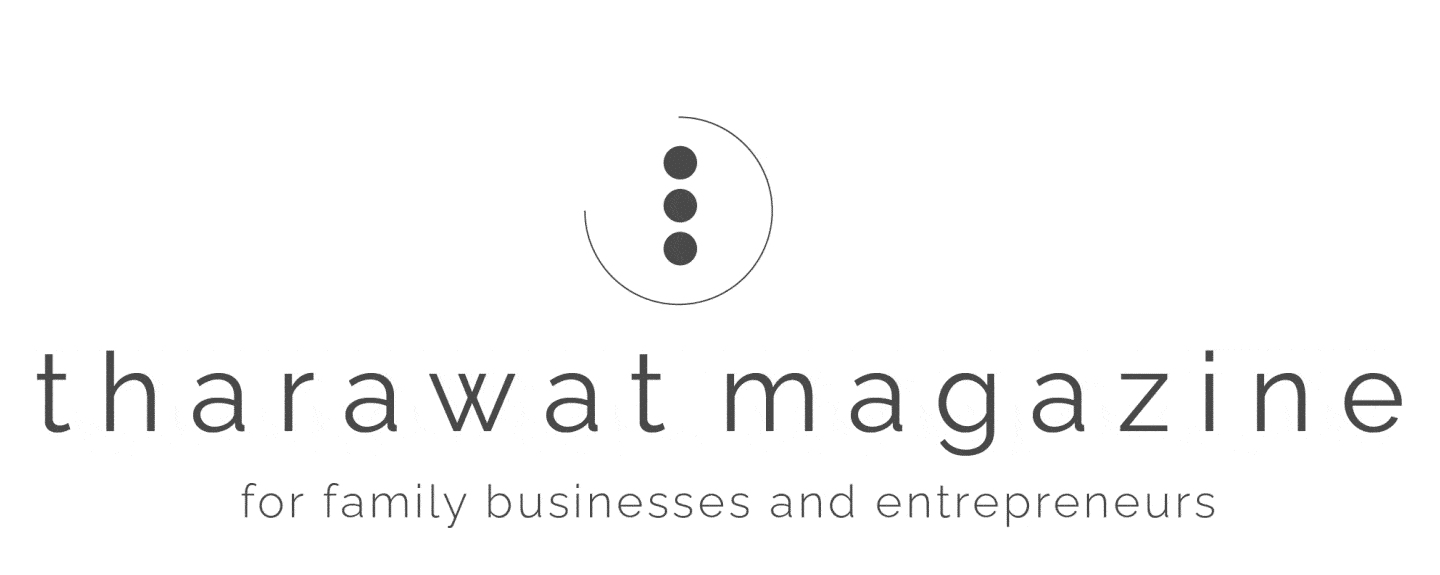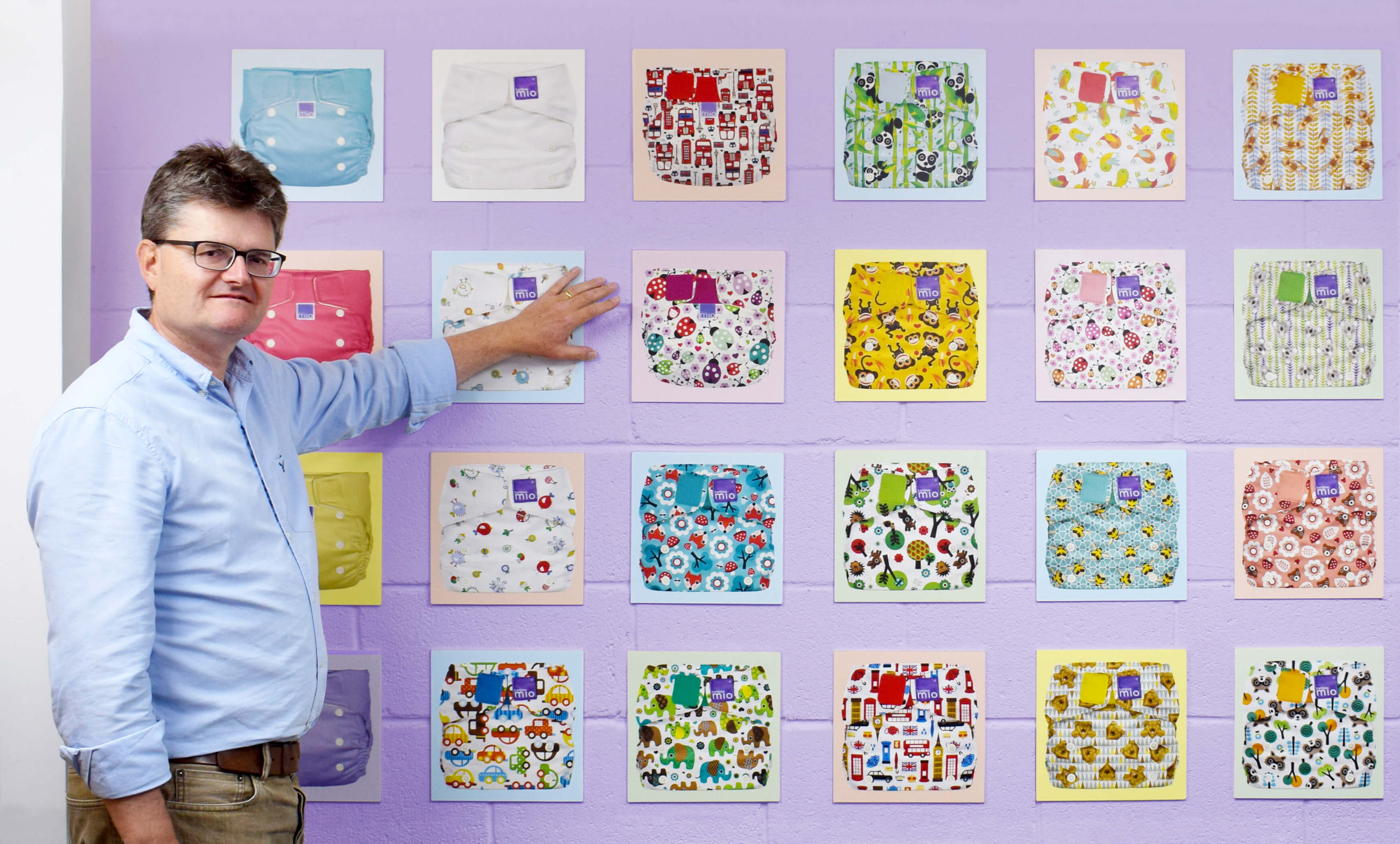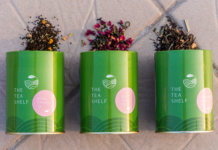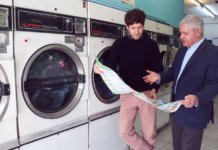Guy and Jo Schanschieff invested 25 years’ worth of effort and capital to realise the full potential of their family business. Bambino Mio, now the largest reusable nappy brand in the world, began with a surreal conversation about nappies at the Taj Mahal.
Since then, Bambino Mio has transformed completely, scaled to a remarkable degree and recovered from a crisis on the way to their current position of marketplace preeminence.
Over the course of the Schanschieff’s entrepreneurial journey, which began in 1992, consumer buying habits have changed in two distinct ways. The meteoric rise of e-commerce means customers are increasingly likely to purchase products from the comfort of their homes with the click of a button. Recognition of global consumerism’s adverse environmental impacts has triggered some to reject single-use plastic items in favour of reusable products. Bambino Mio has successfully capitalised on both trends.
The UK-based duo prioritised digital marketing as a means of infiltrating new markets as soon as they saw the change coming. As a result, they’ve devised a digital marketing strategy that genuinely supports what they do, including work with bloggers, social media influencers and other platforms that drive the consumer decision-making process.
Bambino Mio reusable nappies and baby products are now available in over 50 countries, with exports alone reaching £2.5 million last year.
Tharawat Magazine spoke with Guy Schanschieff about the transition to e-commerce, devising effective modern marketing strategies and engendering trust in the digital age.
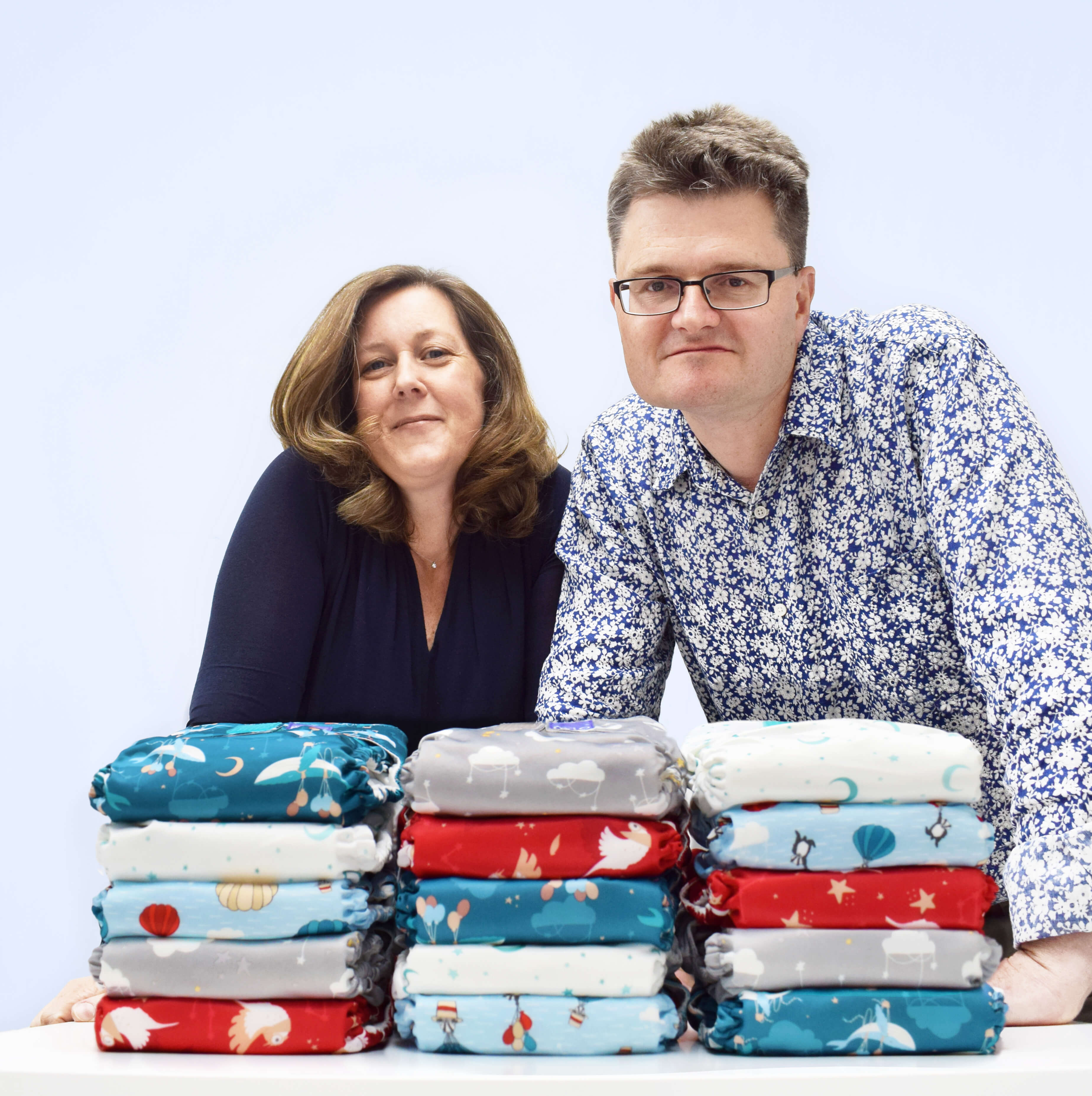
What inspired you to start Bambino Mio?
The full story starts over 25 years ago when I obtained a Business Studies degree. I didn’t know what I wanted to do, so I started training in accountancy with KPMG. I was probably the worst trainee accountant they ever had.
I somehow lasted 18 months there but decided to leave so I could travel together with my wife Jo, whom I had just met at that stage. It was something we both wanted to do, but for me, it was about finding inspiration for a business idea.
On about the third week of our travels, we were in India, at the Taj Mahal. I remember it was a full moon that night, and we were chatting with an American man who started talking about diaper laundry services in the U.S. That was the first time we ever heard of it. A few weeks later, we met some Canadians who told us the same story. When we got to New Zealand and finally saw a nappy laundry with our own eyes, the seed had taken root.
Bambino Mio came about after five years of running a nappy laundry service in the UK. The laundry grew but eventually reached what we thought was its limit. We still believed in the category, so we decided to launch our own range of reusable nappies via mail order in 1997.
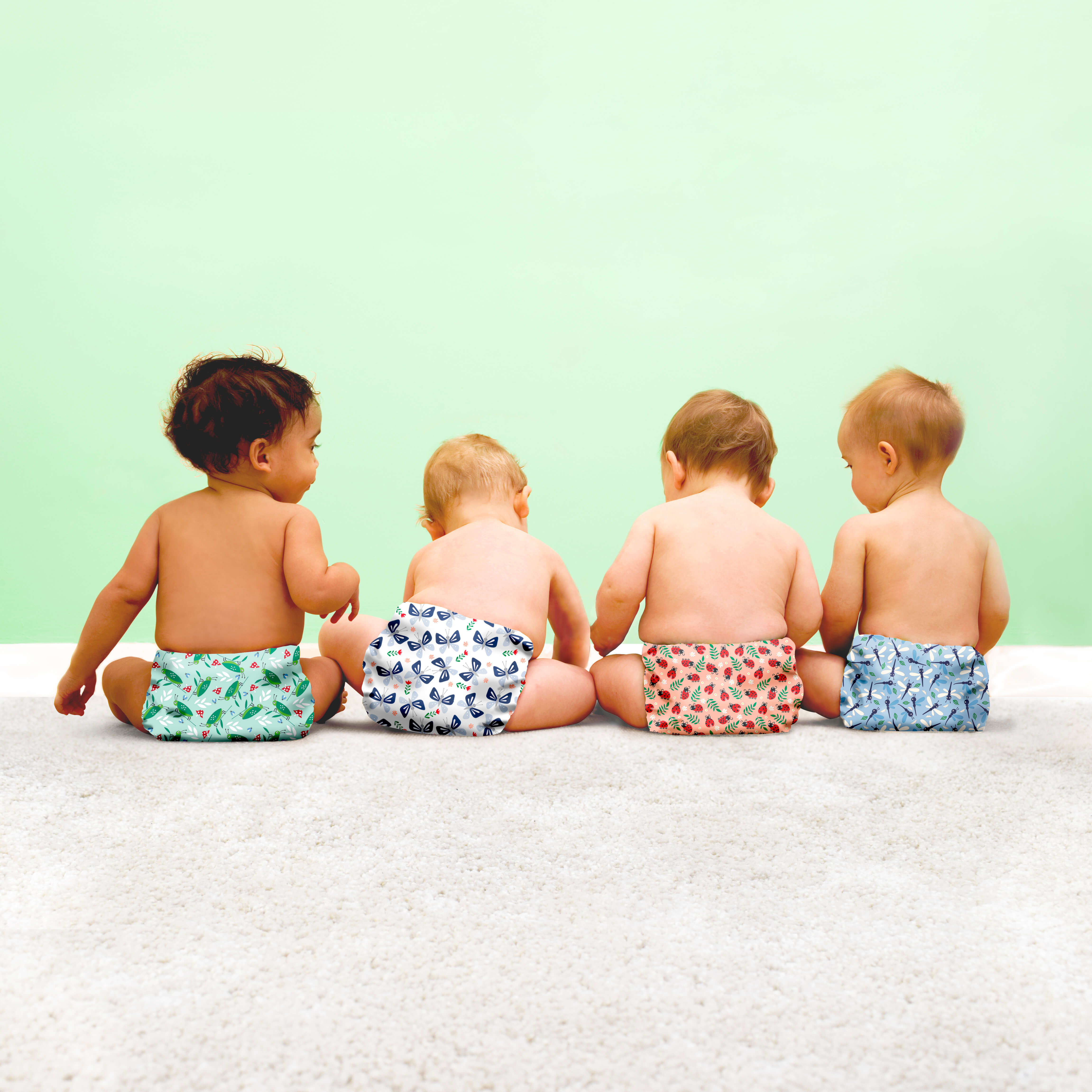
What necessitated the move from mail order to e-commerce?
Going back to the early days of our business, everything was effectively B2C because it was old-fashioned mail order. We weren’t keen to be seen as competitors to large retailers, but we did realise that if you get the distribution channels right, every channel can flourish in a growing market.
If you look at our digital marketing, it’s not just about getting people to our website. On our Facebook page and Instagram, or even in the emails we send out to customers, it’s as much about saying our products are on promotion this weekend at certain locations or that you can claim special discount codes elsewhere like on Amazon, for example.
The distribution channels that we use very much support our marketing strategy and vice versa, so it’s not exclusive to B2C; it’s as much about B2B as well.
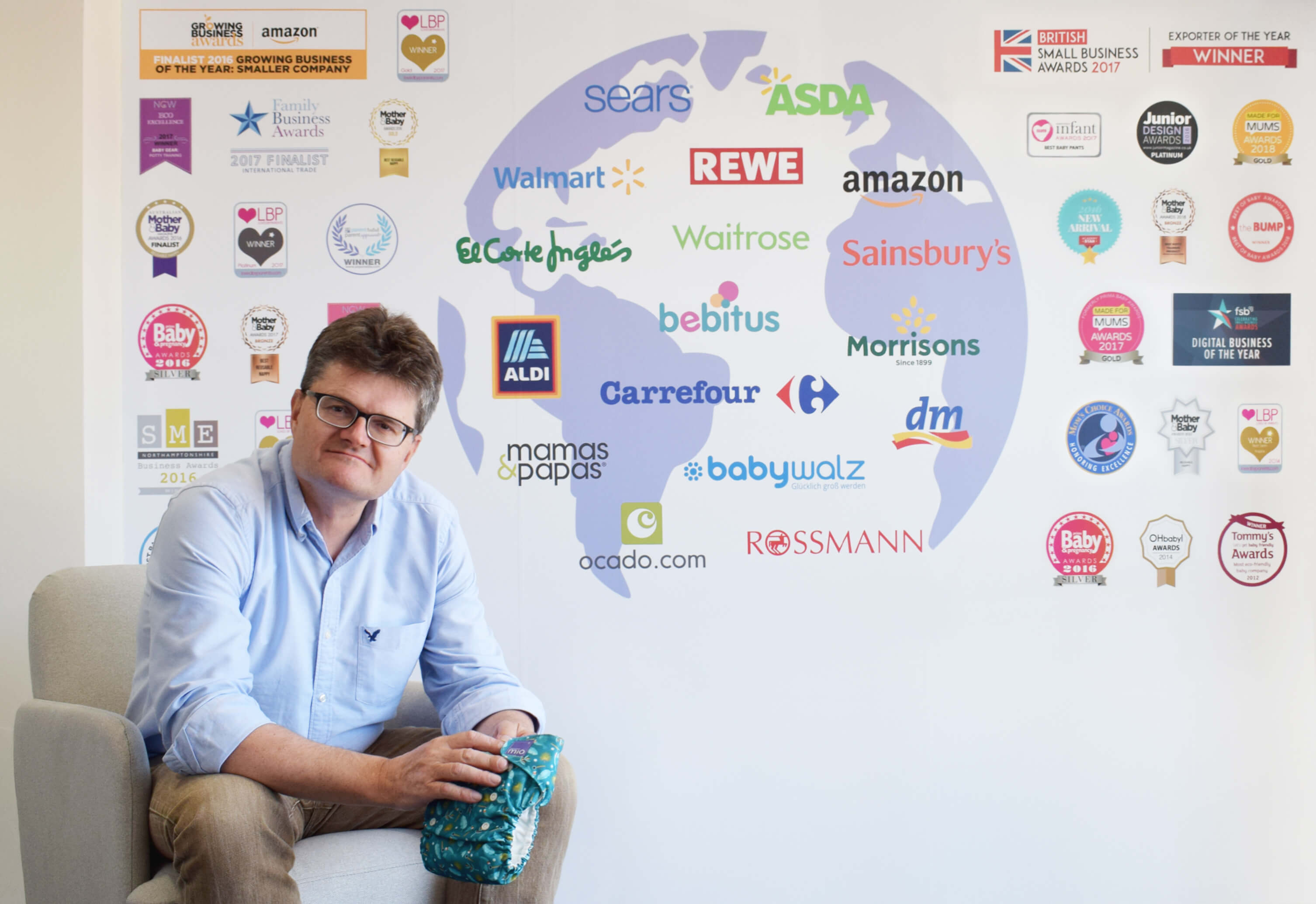
How were you able to internationalise so effectively?
When we reached a point where we thought we either needed to expand the product range or find new markets, that’s when we started working internationally through distributors.
Our first one was in Spain, then Malta, Czech Republic and France, and that network of distributors grew to about 30 or 40 worldwide. We plateaued at a turnover of about £2 million in 2008–2010. Then the recession hit, and our two biggest customers, which were our French and US distributors, began to have issues of their own.
After losing a third of our turnover in one month, we realised we needed to move away from a distributor model. We didn’t feel we had the direct relationship that we needed with retailers, so we employed a German national and a US national and went to those markets directly. Germany was a great success for us.
By last year, the £400,000 in exports we did a few years earlier had grown to £2.5 million – and are still growing. Not only do we sell internationally, but we are an international company by design, with 40 per cent of our team coming from crucial markets including France, Germany, Australia, Spain, the USA, Italy, and others. This diversity imbues Bambino Mio with a breadth of market insight, language skills and culture it wouldn’t otherwise have.
Do you collect and analyse the data from your website to hone your marketing campaigns or strategy?
Much of our strategy is agile and is based on the key performance indicators that we set against website traffic, social media activity and engagement with emails. We use consumer feedback to shape our growth and change our strategy. However, I think it’s also important to look at it from a management point of view in terms of how we’re performing. Are our customers happy with what we’re doing? Are we listening to them? Are we taking that data away to then help scope out and change the way we’re speaking to that audience?
We obviously look at general metrics such as the reach of posts, engagement, comments and ratings. In terms of the way we work though, we’re not only speaking to our audience from a product point of view but also in terms of the industry as a whole. For us, it’s good to champion the industry we are in and the products we have to enable our full impact.
Much of our strategy is agile and is based on the key performance indicators that we set against website traffic, social media activity and engagement with emails. We use consumer feedback to shape our growth and change our strategy.
[ms-protect-content id=”4069,4129″]
Trust is a key factor in the decision-making process for any consumer, but this is especially true for new parents. How do you engender trust?
The majority of our staff in the marketing department are under 30, so it’s millennials talking to millennials, which I think is important. It is about understanding and therefore being true to what you are saying.
One of the reasons why corporates tend to struggle with brands is that if the branding is devised through a process within a large organisation, most people now can see through that. We’re not working through agencies. We’re not some faceless corporate – these are real people talking to real people. That’s what millennials want.
I think it’s a time for disruptive brands to succeed because they provide what today’s consumers are looking for – transparency in what the company does, a story behind the brand and a passionate workforce.
The move away from single-use products and plastic won’t reverse. If anything, it’s going to intensify, and we’ll continue riding this wave for as long as possible.
What are your hopes for the future of Bambino Mio? Do you plan on keeping the business in the family?
We believe that there’s real depth to what we’re doing. Considering the present market and today’s customers, I think that we’re the type of brand that offers something people can believe in and buy into. It’s not just about the product; it’s the whole story of Bambino Mio.
With another hat on, I’ve chaired our trade organisation, The Nappy Alliance, for many years. I gathered our competitors, distributors and manufacturers of washable nappies together to lobby parliament to establish several targets for reducing plastic usage and waste. The response we get now, even at the highest levels of government, is completely different, and that’s because society itself is changing. Our journey will only get quicker and more exciting.
Certainly, our focus is to maintain that 70–80 per cent growth from last year. Some fashion-driven brands and products come along, achieve rapid success and then die. I can’t see that happening with this product category. The move away from single-use products and plastic won’t reverse. If anything, it’s going to intensify, and we’ll continue riding this wave for as long as possible.
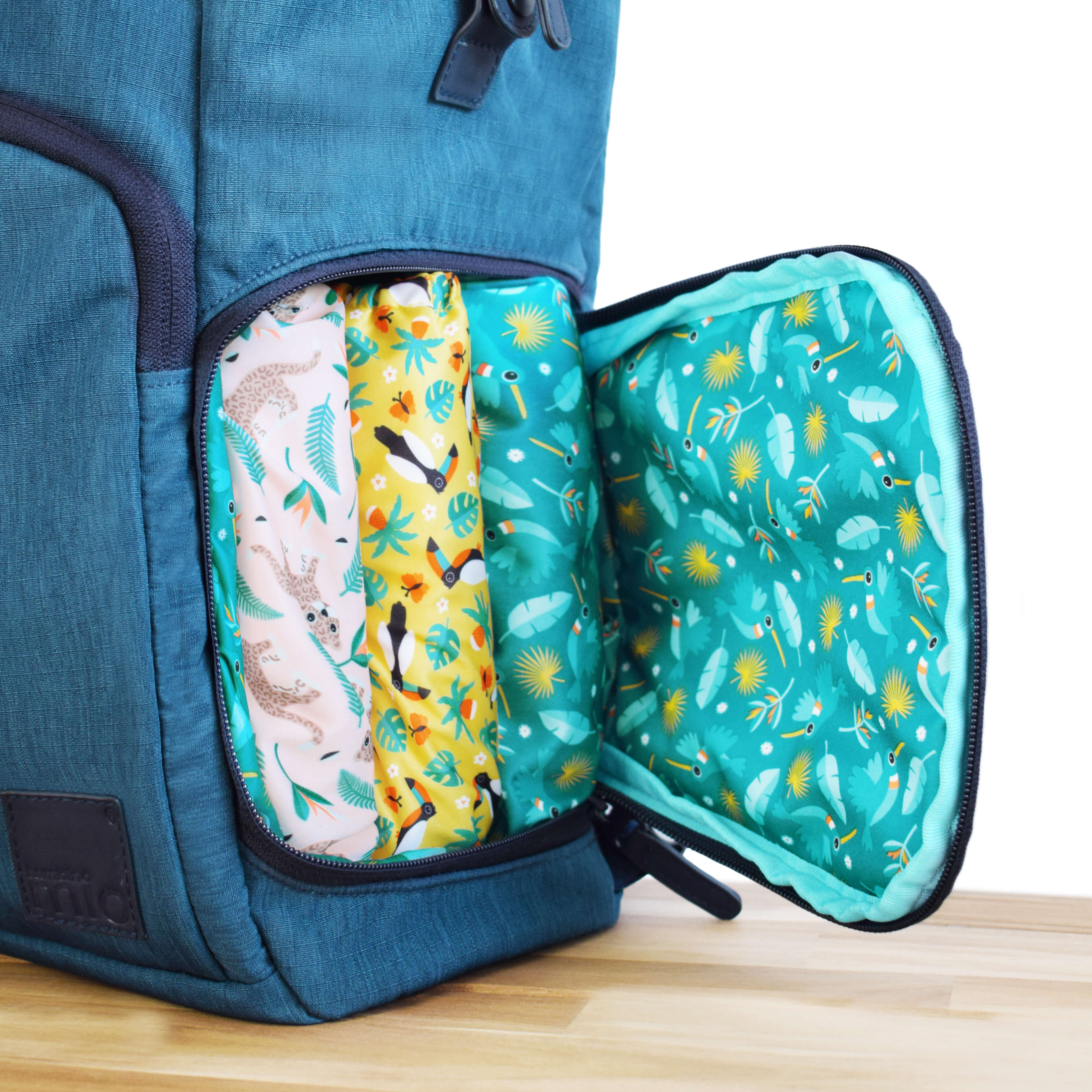
[/ms-protect-content]
